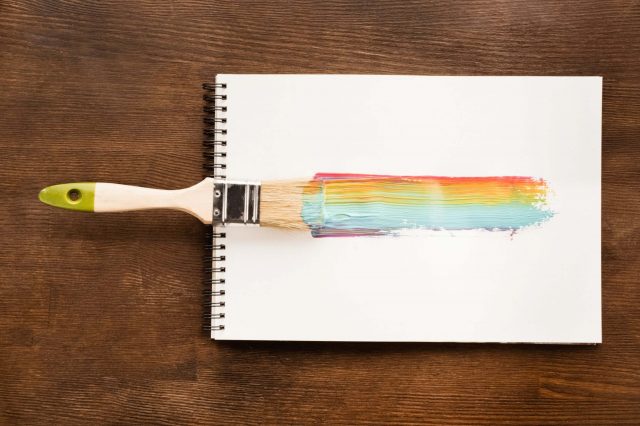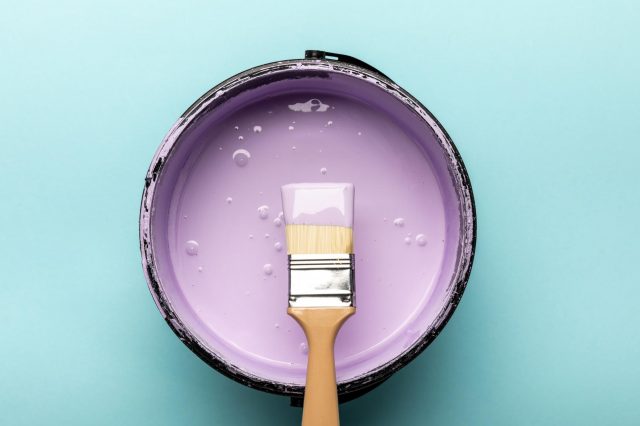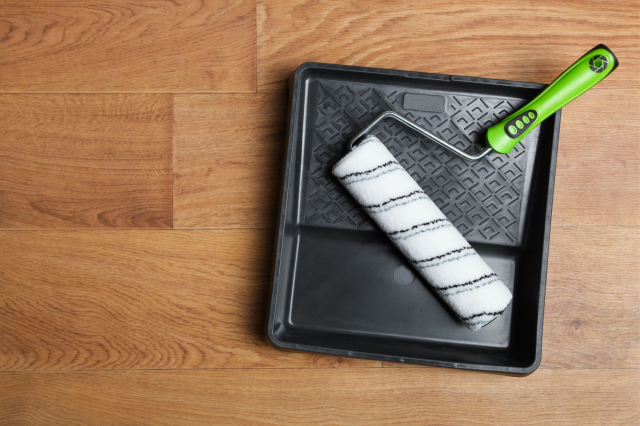How to Remove Chalk Paint: A Comprehensive Guide
Effective Methods for Removing Chalk Paint from Various Surfaces
Chalk paint has been a DIY favorite for years, but what happens when it’s time for a change? Whether you’re looking to refresh an old piece of furniture, correct a paint job, or simply update your décor, removing chalk paint might seem like a daunting task.
Don’t worry! With the right guidance, you can easily strip away chalk paint and restore your items to their original glory.
At Housekeepingbay, we’ve gathered our best tips and tricks to help you remove chalk paint effectively and efficiently. With our head Expert Melinda, this guide will take you through the entire process, offering advice on how to remove chalk paint from various surfaces like wood, metal, fabric, and even clothes. So grab your tools, and let’s get started!
And here you can check the guide How Long Does Chalk Paint Take to Dry?
Can Chalk Paint Be Removed Easily?
Before we dive into the methods, let’s address a common question: Can chalk paint be removed easily? The answer depends on a few factors. If the chalk paint has not been sealed with wax, it can be relatively easy to remove. You might even be able to paint over it without much hassle. However, if the paint has been waxed, you’ll need to put in a bit more effort.
Wax acts as a protective barrier, making the paint more difficult to remove. But fear not, we have solutions for both situations. Whether you’re dealing with unwaxed or waxed chalk paint, this guide will provide you with the best methods to get the job done.

housekeepingbay
How to Remove Chalk Paint from Wood Furniture
Sanding Method
Sanding is one of the most straightforward ways to remove chalk paint from wood. It’s a method that doesn’t require harsh chemicals, making it a great option for those who prefer a more natural approach. Here’s how to do it:
- Gather Your Tools: You’ll need sandpaper with varying grits (start with 60 grit and work your way up to 120 grit), a power sander, a vacuum, and protective gear like a face mask and gloves.
- Remove Wax: If your furniture has been waxed, you’ll need to remove the wax first. Dip a cloth in turpentine or mineral spirits and rub it over the surface. Once the wax is removed, allow the wood to dry.
- Start Sanding: Begin sanding along the grain of the wood using the coarse 60-grit sandpaper. Replace the sandpaper when it becomes clogged with paint, and vacuum the dust as needed.
- Finish with Fine Sandpaper: As the layers of paint start to thin out, switch to finer sandpaper (80, 100, and finally 120 grit). This will help smooth the surface and remove any remaining paint.
- Clean Up: Wipe the wood clean with a damp rag or paper towel to remove any dust and residue.
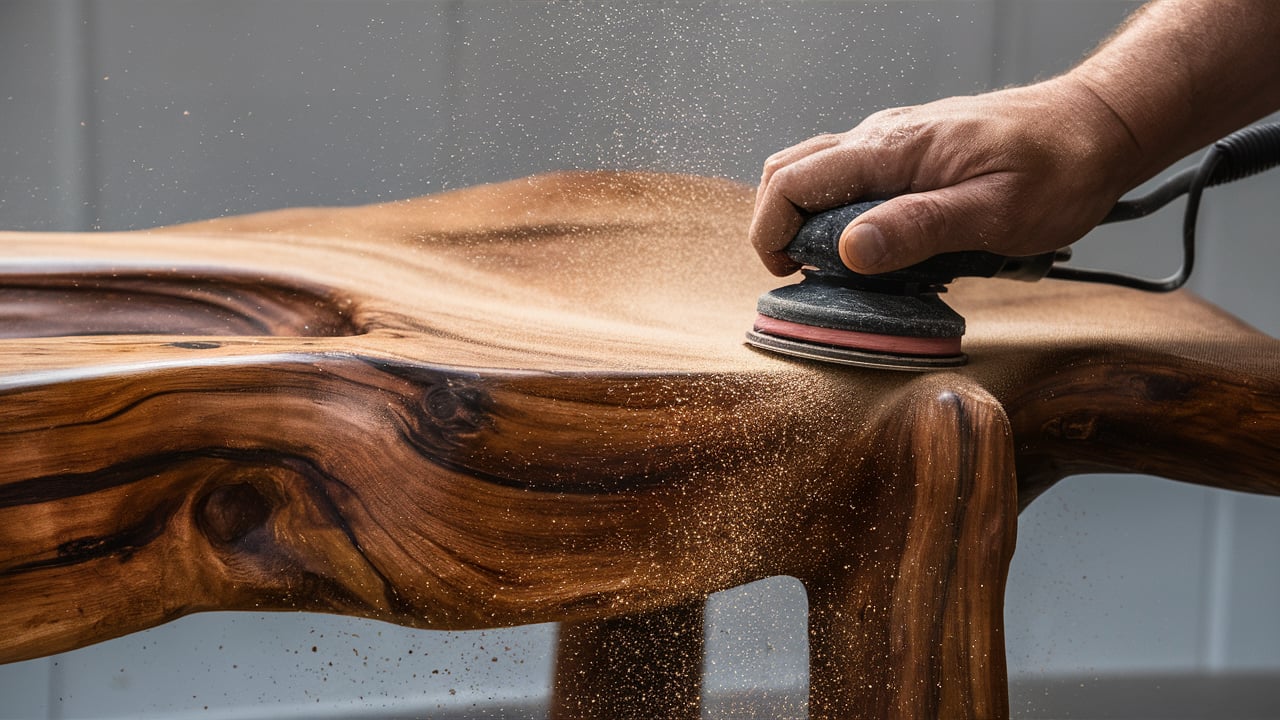
housekeepingbay
Chemical Strippers
For a quicker and less labor-intensive method, chemical strippers can be a great alternative. These products are designed to break down the paint so it can be easily scraped off. Here’s how to use them:
- Choose an Eco-Friendly Stripper: There are many paint strippers on the market, but we recommend opting for an eco-friendly product that’s safer for you and the environment.
- Apply the Stripper: Using a paintbrush, apply a thick coat of the stripper to the painted surface. Follow the manufacturer’s instructions for the recommended waiting time. Typically, the paint will start to bubble and wrinkle, indicating that it’s ready to be removed.
- Scrape Away the Paint: Use a plastic putty knife to gently scrape away the softened paint. Be careful not to damage the wood underneath.
- Remove Residue: For any remaining paint, dip steel wool into soapy water and scrub the surface. Once the paint is gone, rinse the area with clean water and let it dry.
- Final Sanding: After the wood has dried, use fine-grit sandpaper to smooth out the surface.
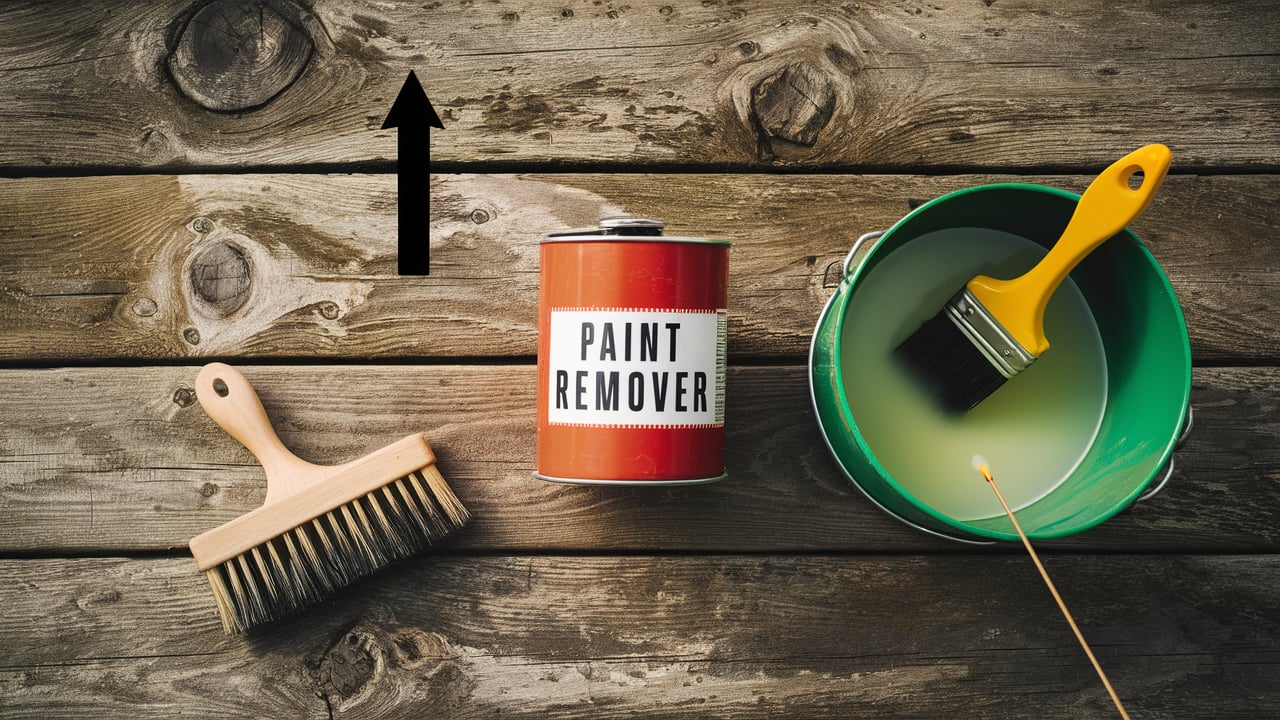
housekeepingbay
Here you can check the guide Is Chalk Paint Waterproof?
Industrial-Grade Paint Solvents
When dealing with multiple layers of chalk paint or particularly stubborn areas, industrial-grade solvents might be necessary. These solvents are stronger than typical chemical strippers and can tackle tough jobs.
- Soak the Surface: Begin by soaking the painted area with warm water. This helps to loosen the paint and make the solvent more effective.
- Apply the Solvent: Using a scrubbing sponge or steel wool, apply the solvent to the paint and start scrubbing. Work on one section at a time, and frequently rinse your sponge in warm water.
- Scrub Away the Paint: Continue scrubbing until most of the paint is removed. Rinse the area with clean water to remove any solvent residue.
- Sand the Surface: Once the wood is completely dry, sand it with fine-grit sandpaper to remove any remaining paint and smooth the surface.
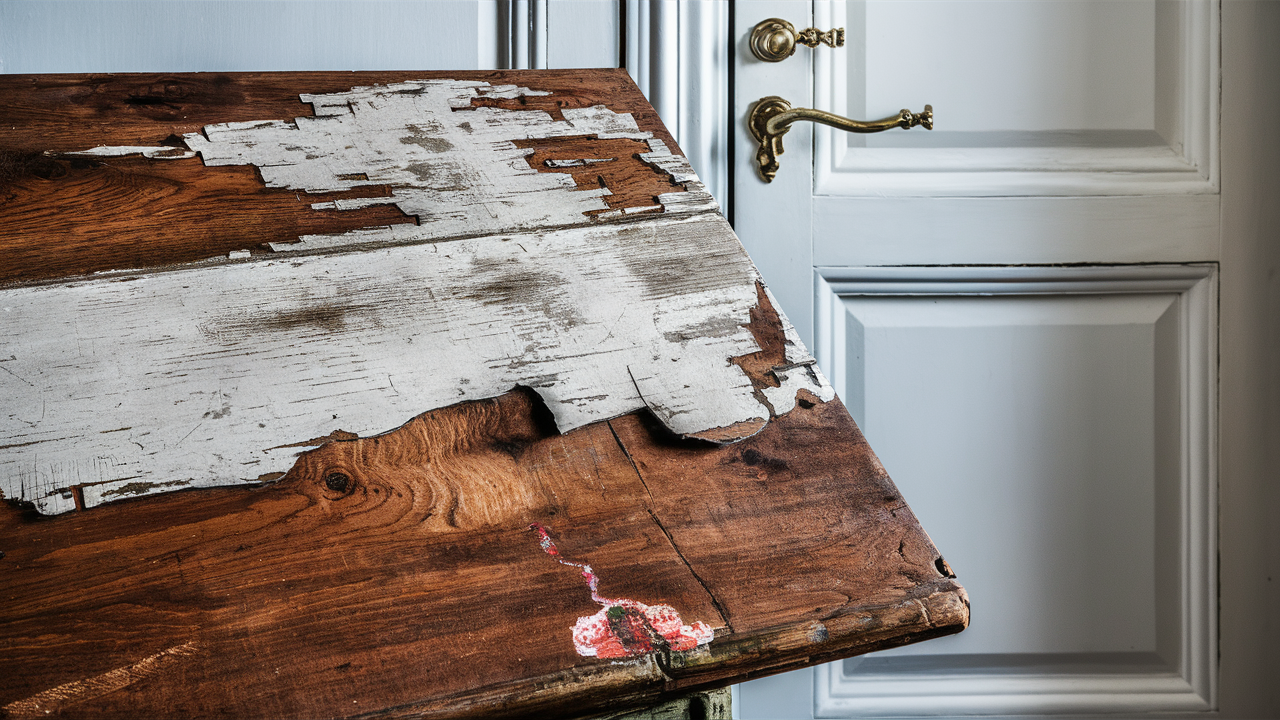
housekeepingbay
Heat Gun Method
Using a heat gun to remove chalk paint is less messy than other methods and doesn’t involve chemicals, making it a popular choice for many DIYers. However, it’s important to exercise caution when using a heat gun to avoid damaging the wood or starting a fire.
- Prepare Your Workspace: Make sure you’re working in a well-ventilated area and have heat-proof gloves, goggles, and a fire extinguisher on hand.
- Apply Heat: Hold the heat gun 8-10 inches away from the wood and move it slowly across the painted surface. The paint will begin to bubble and lift.
- Scrape the Paint: Using a metal putty knife, gently scrape away the softened paint. Always scrape in the direction of the wood grain to avoid gouging the surface.
- Final Sanding: After removing the paint, sand the wood with fine-grit sandpaper to smooth it out.
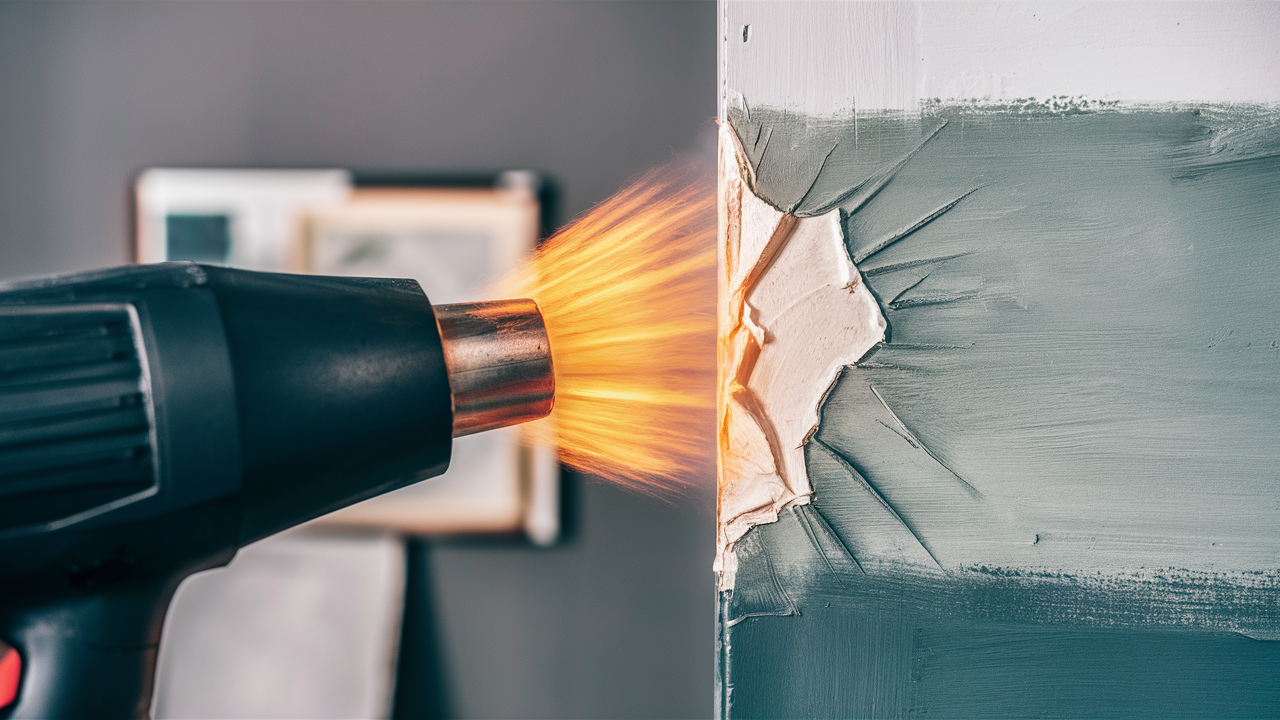
housekeepingbay
How to Remove Chalk Paint from Metal
Metal surfaces can be a bit trickier to work with, but with the right approach, you can remove chalk paint without damaging the underlying material.
Sanding Method
For small metal objects, sanding can be an effective way to remove chalk paint. Use fine-grit sandpaper and work gently to avoid scratching the metal. If you’re dealing with a larger surface, consider using a power sander with a fine-grit attachment.
Chemical Strippers
Chemical strippers are also effective on metal. Apply the stripper carefully using a brush and let it sit according to the manufacturer’s instructions. Use a plastic scraper to remove the paint, and rinse the metal with water to remove any residue.
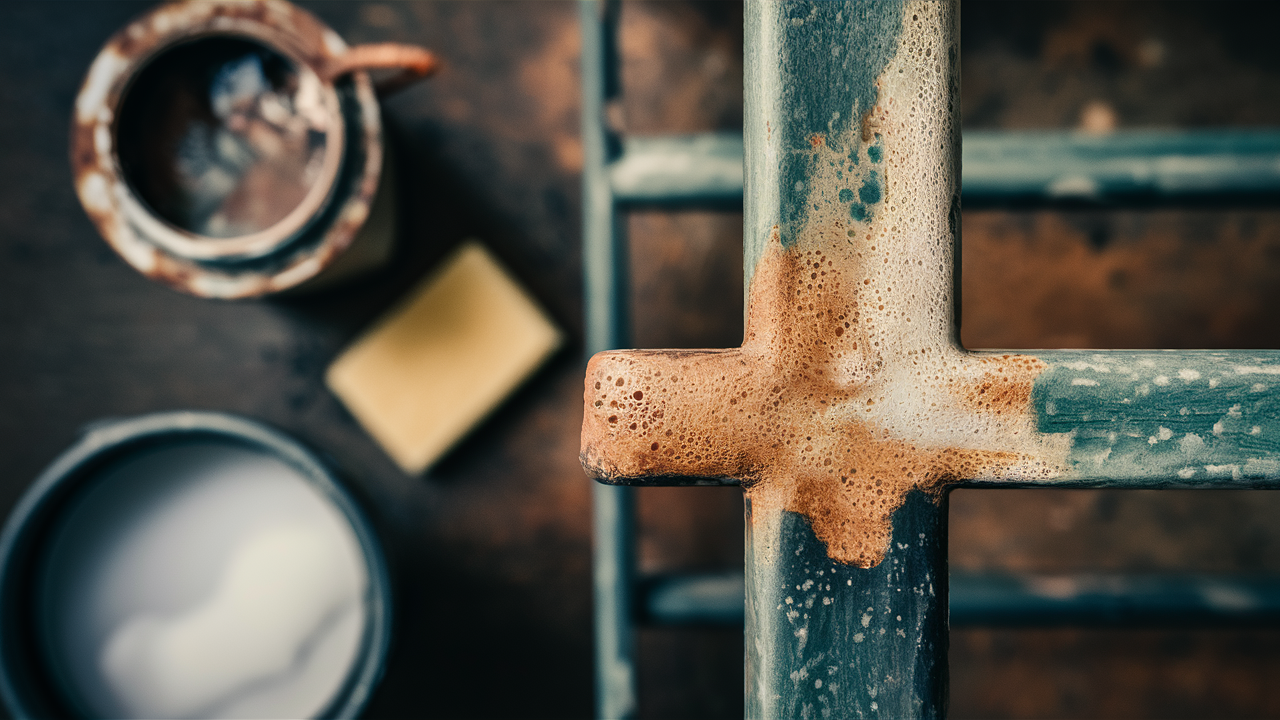
housekeepingbay
How to Remove Chalk Paint from Fabric
If you’ve accidentally gotten chalk paint on fabric, quick action is key. Here’s how to remove it:
For Fresh Stains:
- Blot the Stain: Use a damp cloth to blot the stain, removing as much paint as possible. Avoid rubbing, as this can push the paint deeper into the fibers.
- Wash the Fabric: If possible, wash the fabric immediately with cold water and mild detergent.
For Dried Paint:
- Apply Rubbing Alcohol: Dampen a cloth with rubbing alcohol and blot the stain. The alcohol will help to lift the paint from the fabric.
- Use a Stain Remover: If the paint is still visible, apply a laundry stain remover and let it sit for 15-20 minutes before washing the fabric.
- Avoid the Dryer: Do not put the fabric in the dryer until you’re sure the stain is gone, as heat can set the paint permanently.

housekeepingbay
Here you can check the guide Chalk Paint by Sherwin Williams
How to Get Chalk Paint Out of Clothes
Similar to fabric, chalk paint on clothes should be treated as soon as possible. Follow these steps:
For Fresh Paint:
- Blot the Excess Paint: Use a damp cloth to remove as much of the wet paint as possible.
- Rinse and Wash: Rinse the area with cold water and wash the clothing in cold water with a mild detergent.
For Dried Paint:
- Blot with Rubbing Alcohol: Use rubbing alcohol to blot the stain, lifting the paint from the fabric.
- Apply Stain Remover: Apply a stain remover and wash the clothing according to the care instructions. Again, avoid using a dryer until the stain is completely removed.
How to Remove Chalk Paint Wax
If your chalk-painted item has been sealed with wax, you’ll need to remove the wax before repainting or refinishing. Here’s how:
- Use Mineral Spirits: Dampen a cloth with mineral spirits and rub it over the waxed surface. The wax should dissolve and lift off the paint.
- Sand the Surface: Once the wax is removed, sand the surface with fine-grit sandpaper to prepare it for further work.
How to Remove Chalk Paint from Furniture
Removing chalk paint from furniture involves choosing the right method based on the material. For wood furniture, sanding, chemical strippers, solvents, or a heat gun are all viable options. Metal furniture requires gentler handling, with fine sanding or careful application of strippers. For upholstered or fabric-covered furniture, spot treatment with rubbing alcohol or stain remover is recommended.
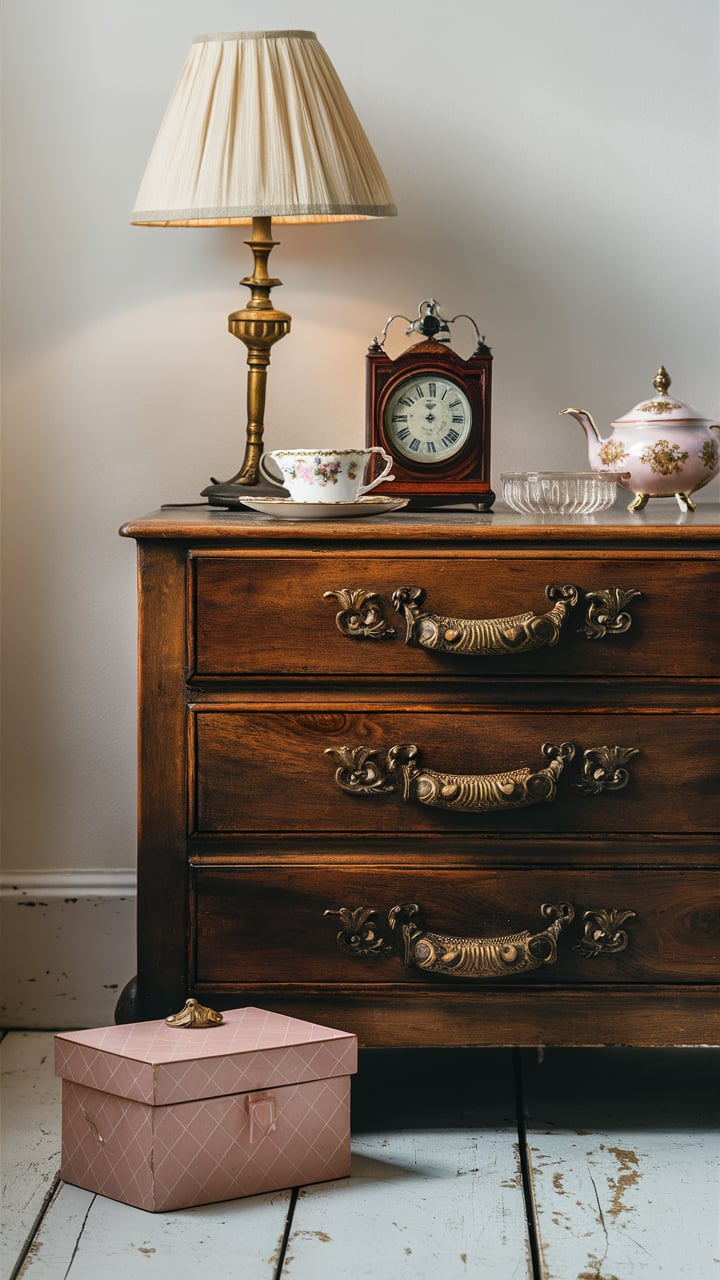
housekeepingbay
How to Remove Chalk Paint from Walls
Walls painted with chalk paint can be tricky to clean without damaging the underlying surface. Sanding is an option, but it can be labor-intensive and dusty. Chemical strippers or a heat gun may be more efficient, especially if you’re dealing with a large area. Always test a small, inconspicuous area first to ensure the method won’t damage your walls.
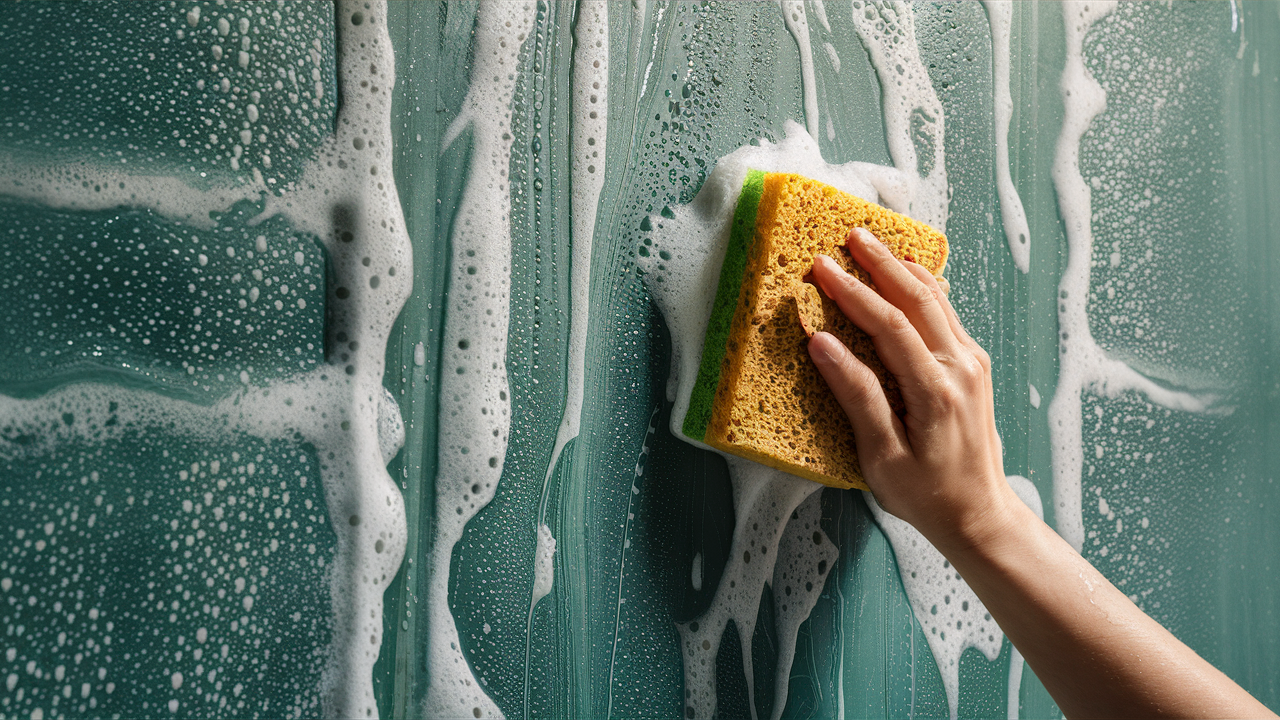
housekeepingbay
How to Remove Chalk Paint Residue
After removing chalk paint, you may notice residue left behind. This can usually be cleaned with soapy water and a scrubbing sponge. For more stubborn residue, a bit of mineral spirits or a mild solvent can help. Be sure to wipe down the surface thoroughly afterward to remove any lingering chemicals.
Conclusion
Removing chalk paint can seem overwhelming, but with the right tools and methods, it’s entirely manageable. Whether you’re dealing with wood, metal, fabric, or walls, there’s a method to suit your needs. By understanding the different methods and materials, you can choose the best approach for your situation and achieve professional results every time.
